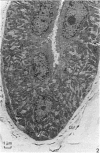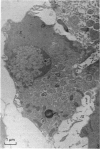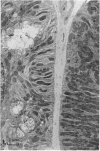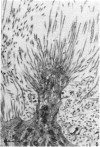Abstract
The nasal anatomy of Elephantulus brachyrhynchus and E. myurus shows adaptations needed for a long, mobile snout with no special chemosensory features. Olfactory and vomeronasal neuroepithelia do not extend rostral to the nasal opening of the incisive ducts. Their fine structure presents no unusual features. Separate dorsal, lateral and ventral cartilages and fenestrations in the septal cartilage permit snout flexibility. Dorsal and ventral tubular glands extend the whole length of the snout under the dermis but only release their secretions at the tip, together with the products of the nasolacrimal and lateral nasal gland ducts. These secretions may protect the bare rostral epithelium from the chemical defences of termites and ants, which are major food items. A ventral groove in the snout communicates directly with the sulcus of the incisive papilla on the rostral palate. The oral openings of the incisive ducts also lie within the sulcus. Variability in the relation of the vomeronasal duct to the incisive duct and in the presence of taste buds on the incisive papilla in the two species of Elephantulus studied here limit their value as evidence of relationships between elephant shrews and other insectivores and prosimians.
Full text
PDF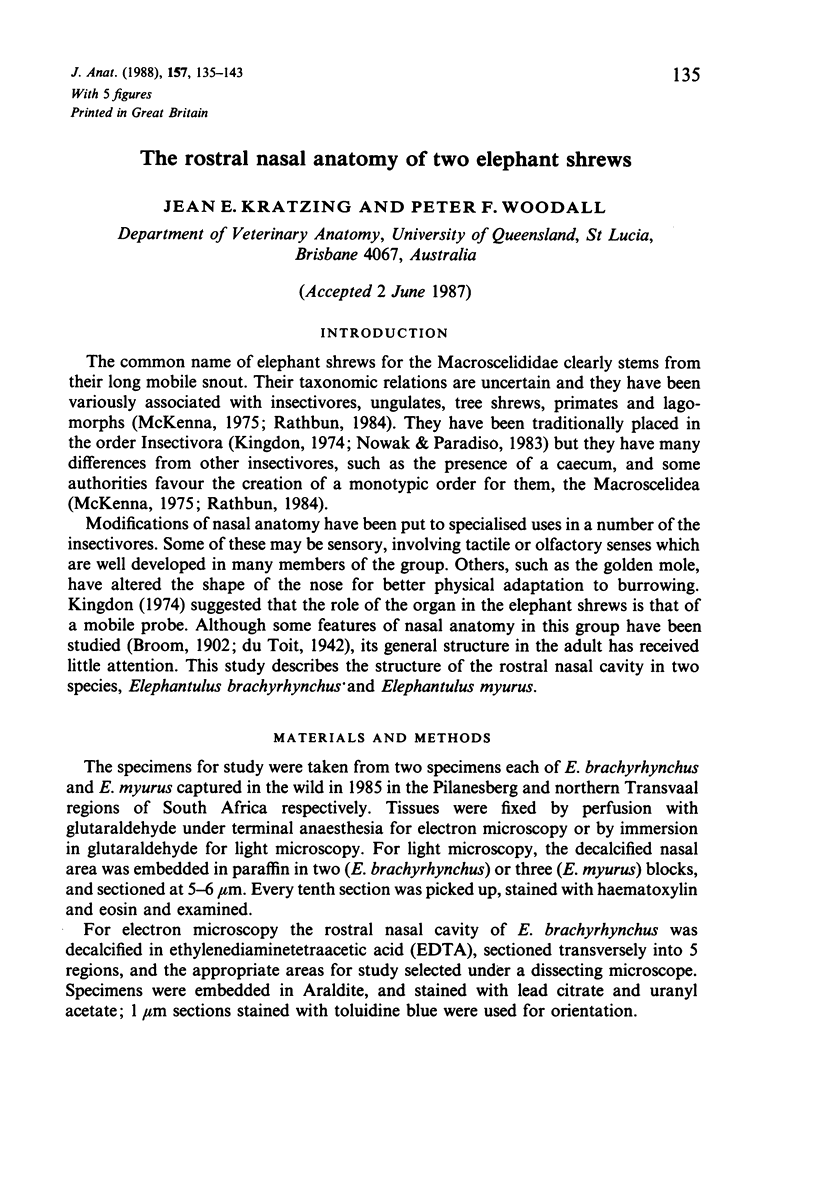
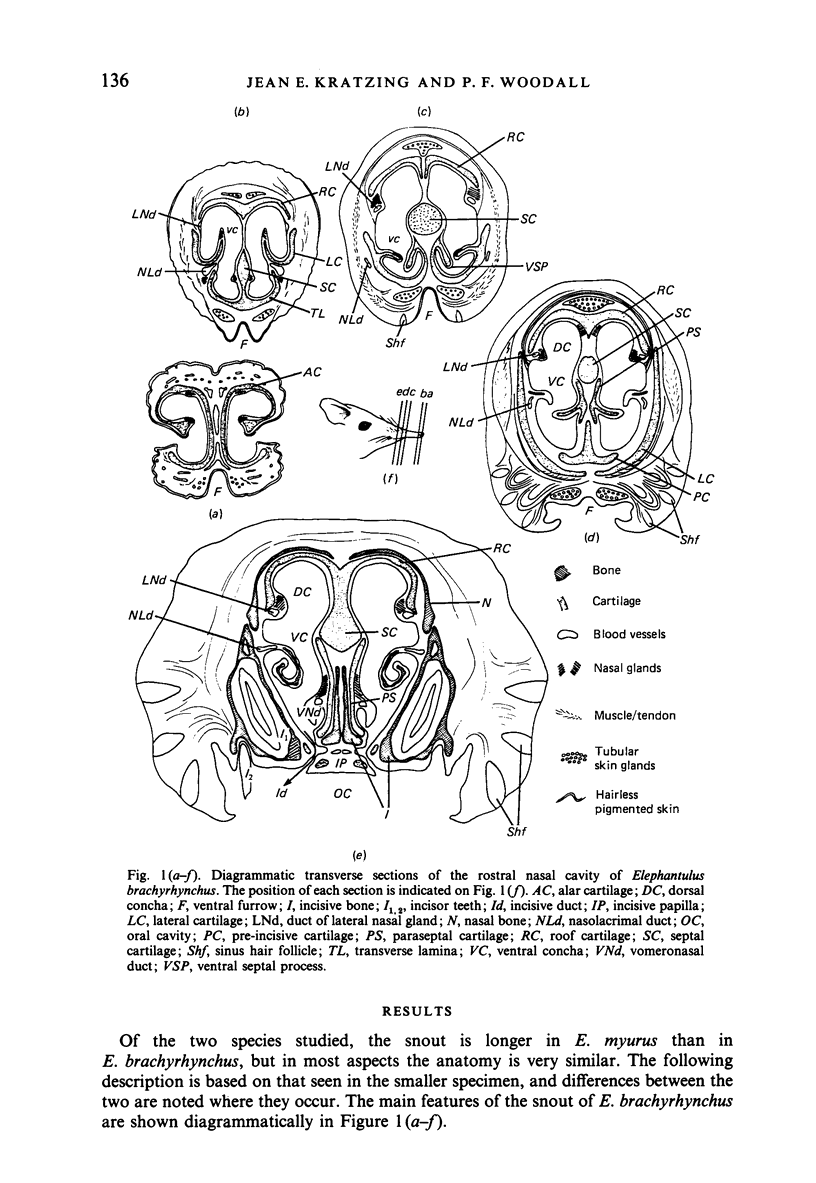


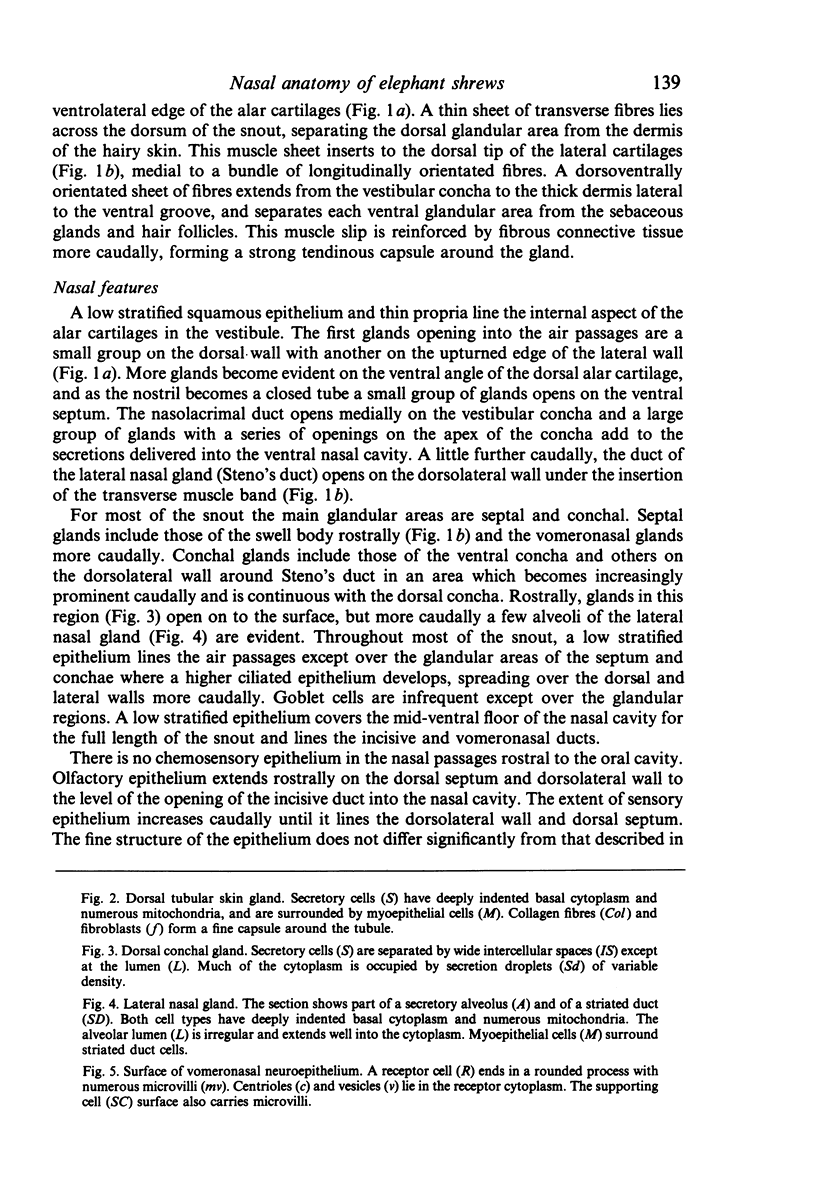
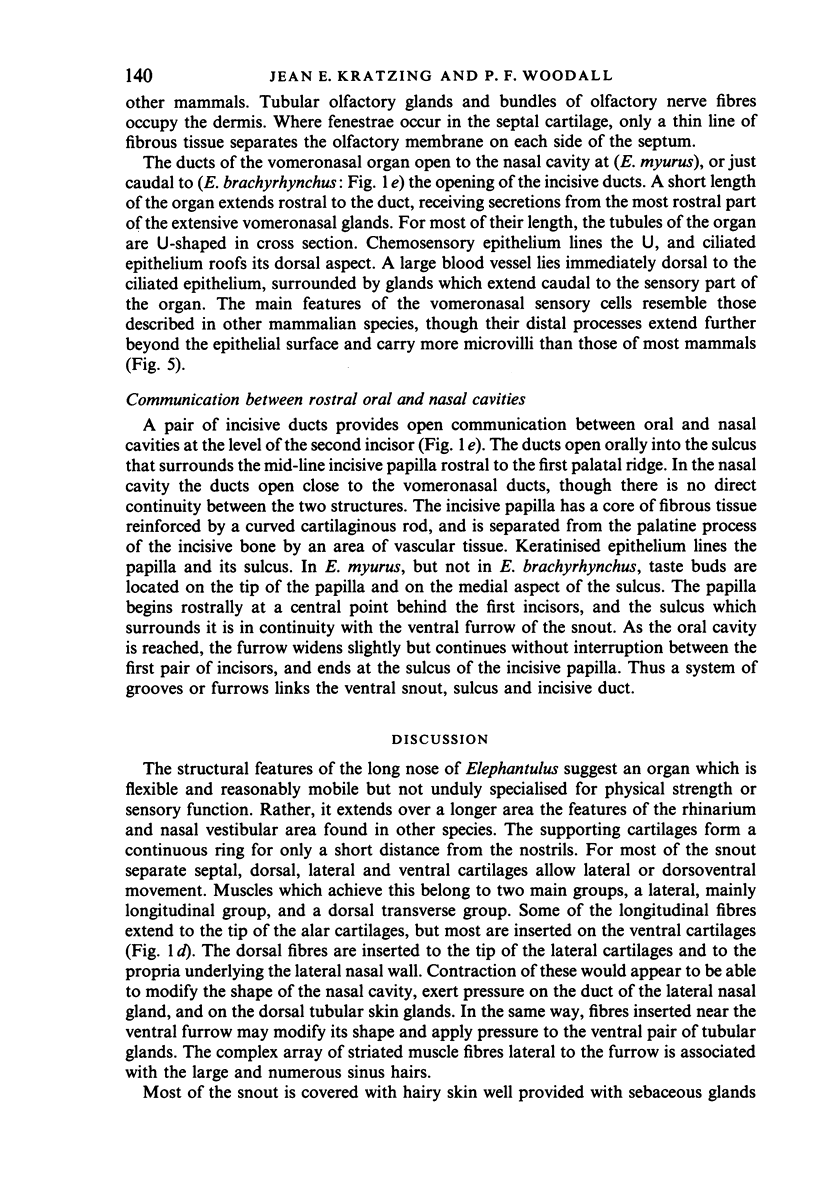
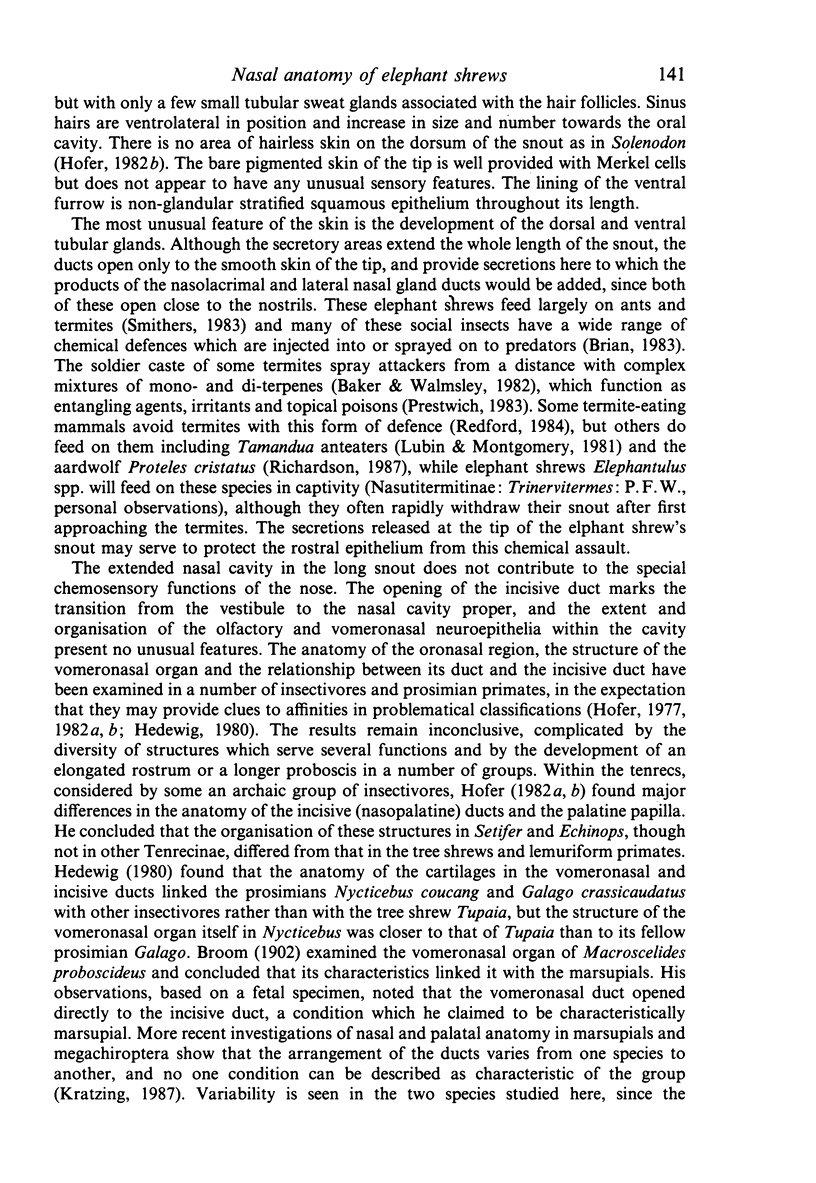
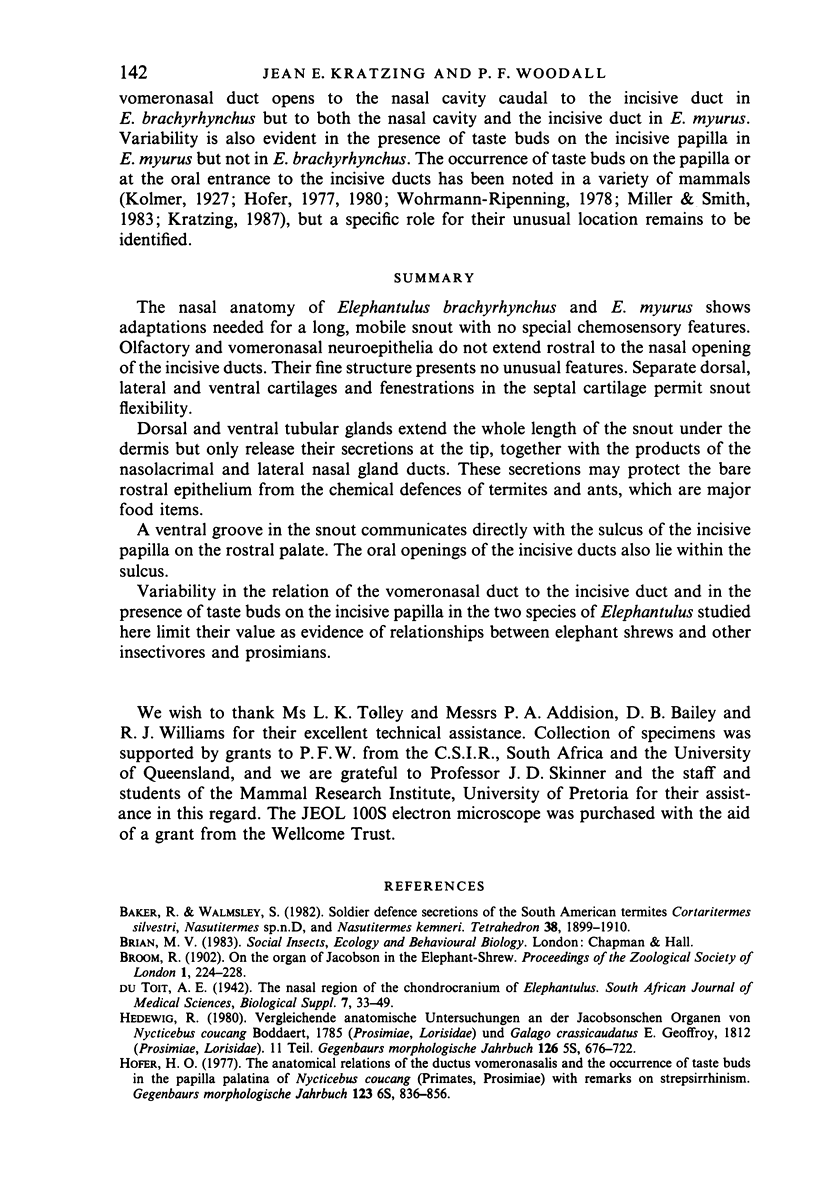
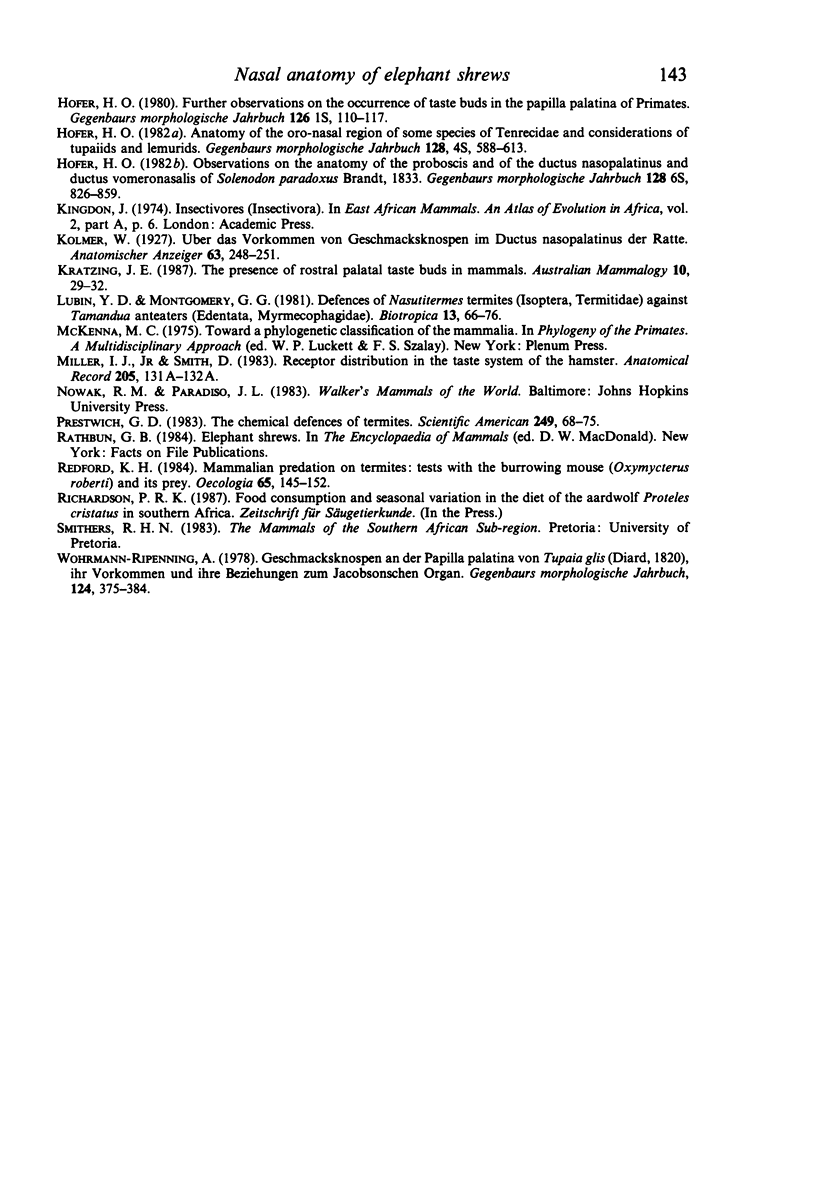
Images in this article
Selected References
These references are in PubMed. This may not be the complete list of references from this article.
- Hedewig R. Vergleichende anatomische Untersuchungen an den Jacobsonschen Organen von Nycticebus coucang Boddaert, 1785 (Prosimiae, Lorisidae) und Galago crassicaudatus E. Geoffroy, 1812 (Prosimiae, Lorisidae) II. Teil: Galago crassicaudatus. Gegenbaurs Morphol Jahrb. 1980;126(5):676–722. [PubMed] [Google Scholar]
- Hofer H. O. Anatomy of the oro-nasal region of some species of Tenrecidae and considerations of Tupaiids and Lemurids. Gegenbaurs Morphol Jahrb. 1982;128(4):588–613. [PubMed] [Google Scholar]
- Hofer H. O. Observation on the anatomy of the proboscis and of the ductus nasopalatinus and ductus vomeronasalis of Solenodon paradoxus Brandt, 1833. Gegenbaurs Morphol Jahrb. 1982;128(6):826–850. [PubMed] [Google Scholar]
- Hofer H. O. The anatomical relations of the ductus vomeronasalis and the occurrence of taste buds in the papilla palatina of Nycticebus coucang (primates, prosimiae) with remarks on strepsirrhinism. Gegenbaurs Morphol Jahrb. 1977;123(6):836–856. [PubMed] [Google Scholar]
- Wöhrmann-Repenning A. Geschmacksknospen an der Papilla palatina von Tupaia glis (Diard 1820), ihr Vorkommen und ihre Beziehungen zum Jacobsonschen Organ. Gegenbaurs Morphol Jahrb. 1978;124(3):375–384. [PubMed] [Google Scholar]



